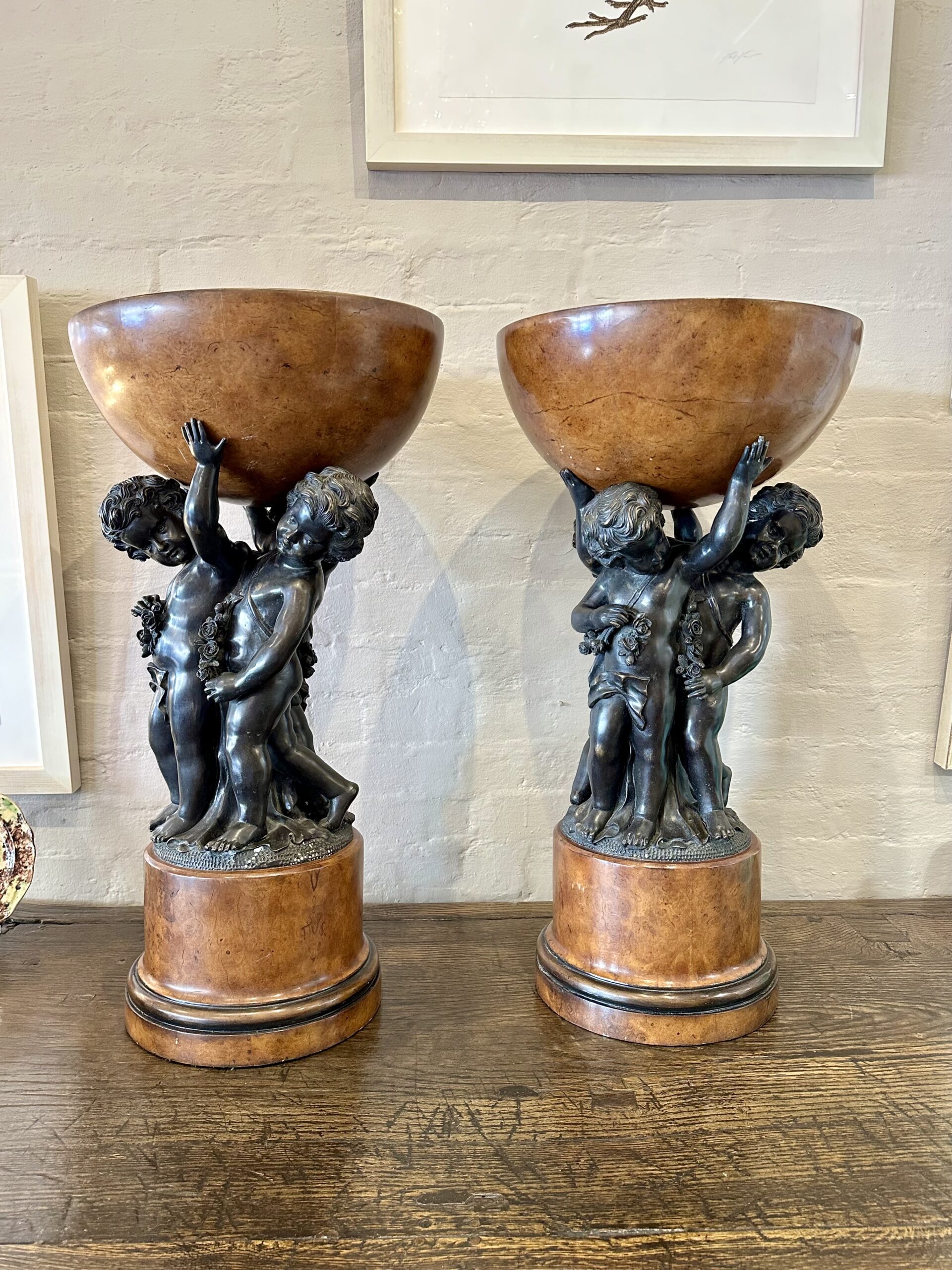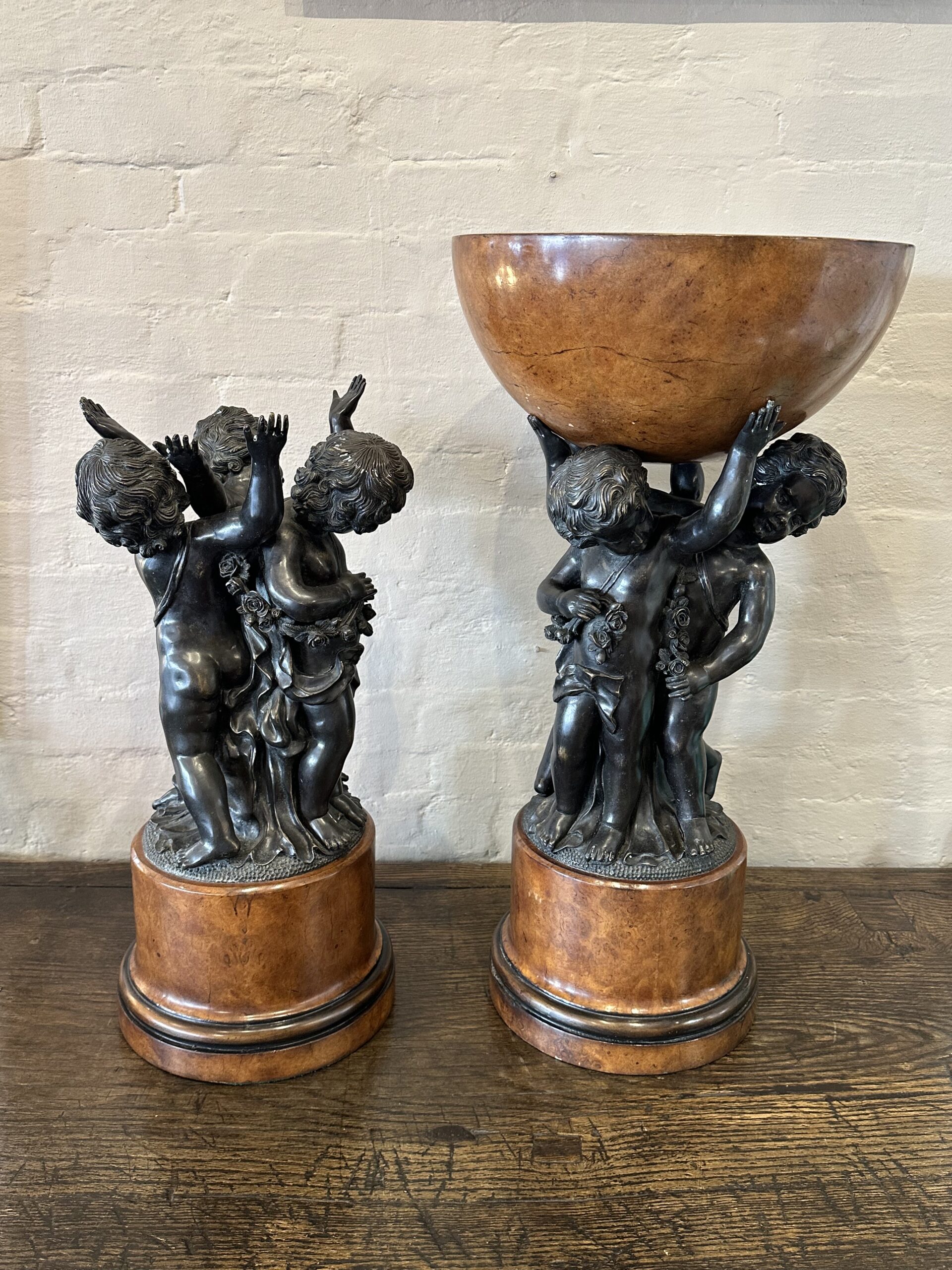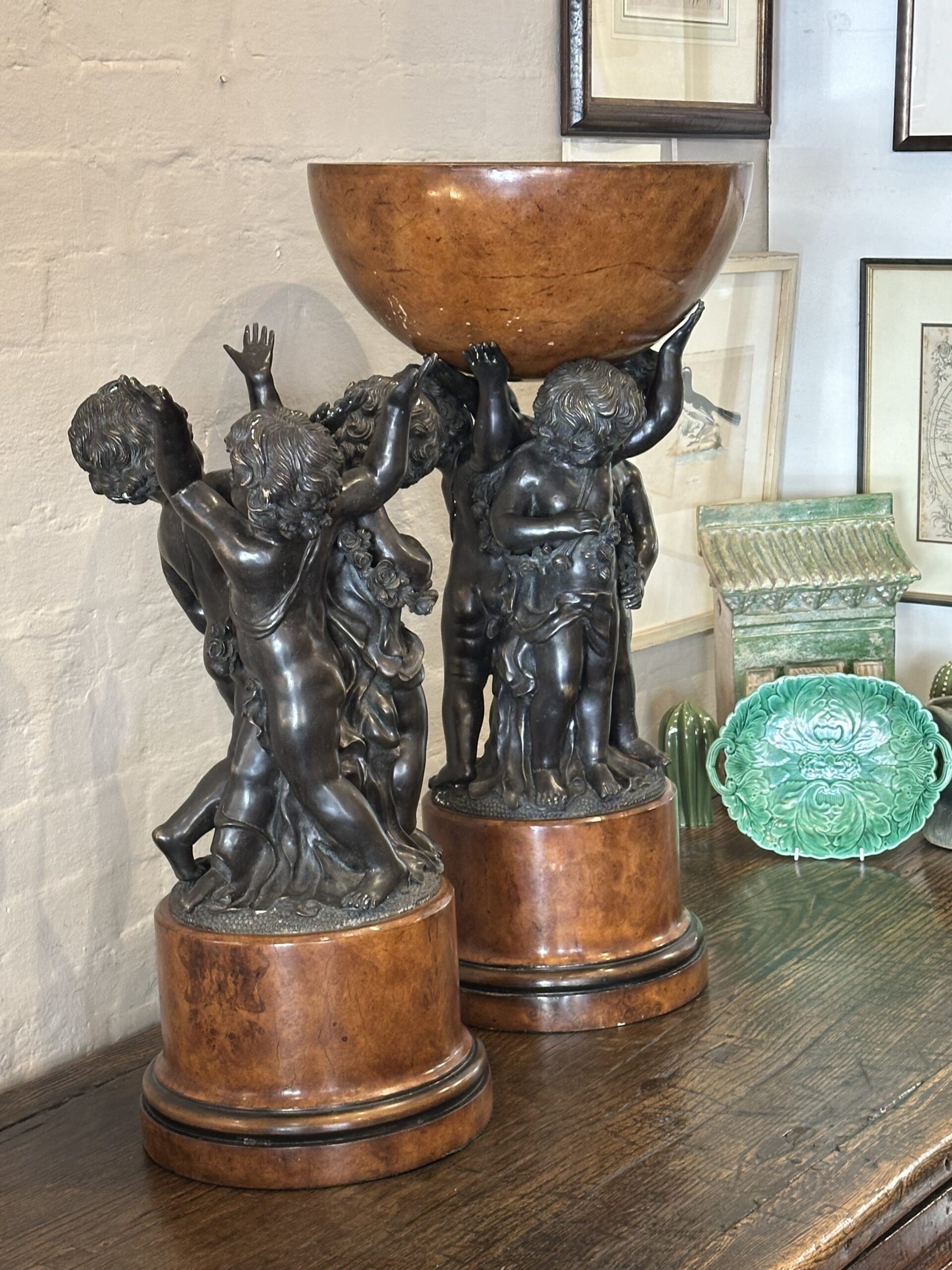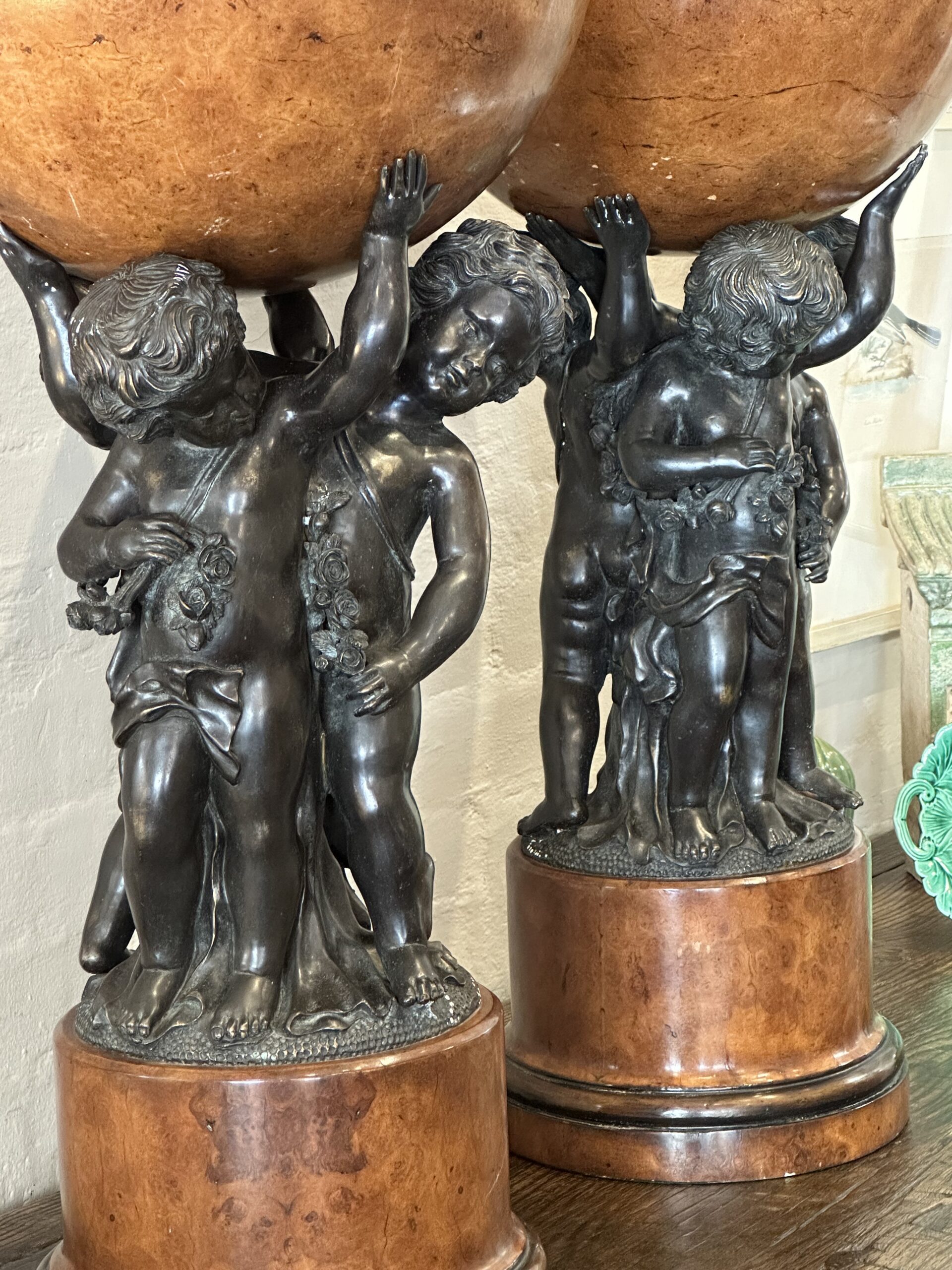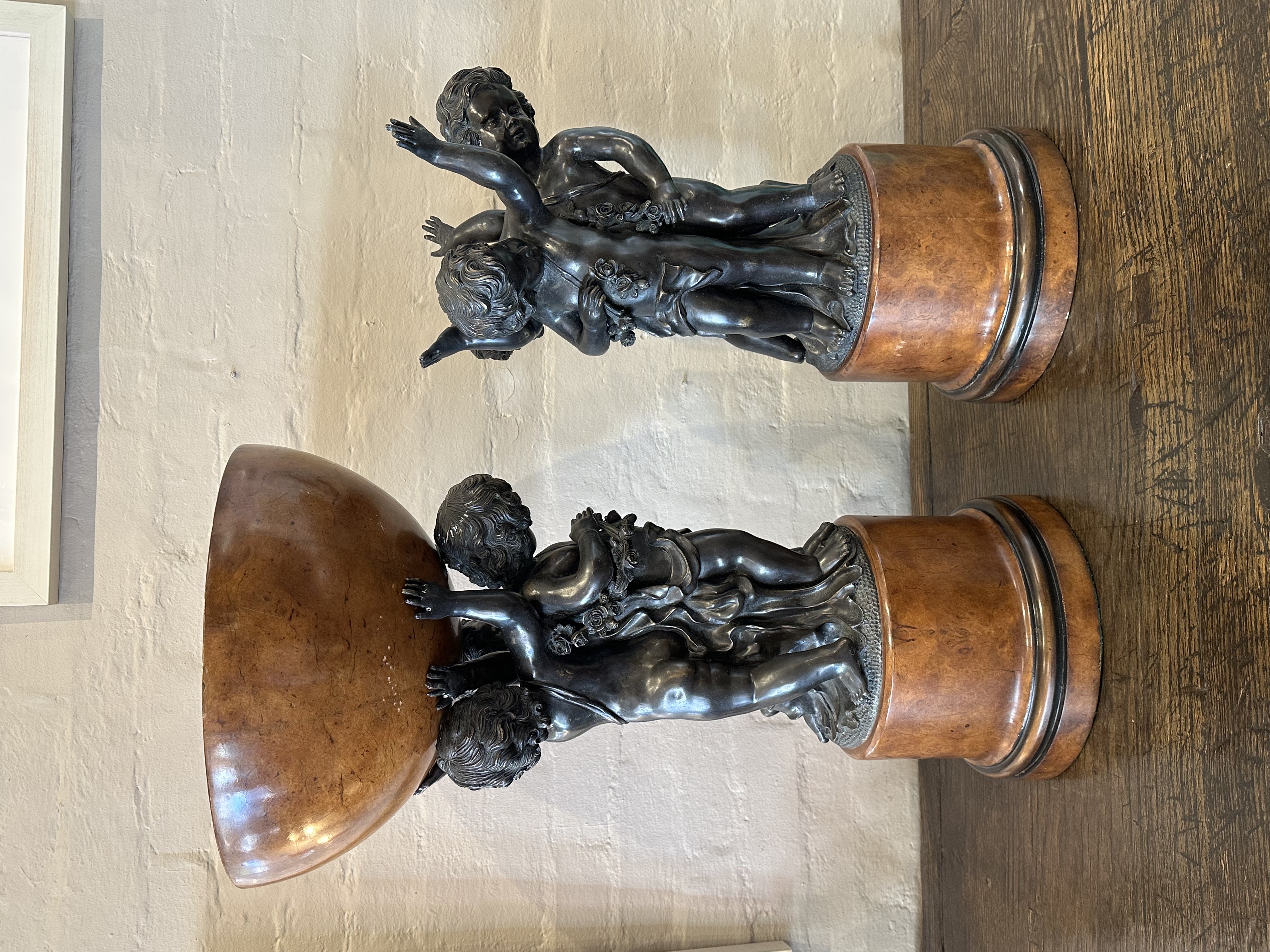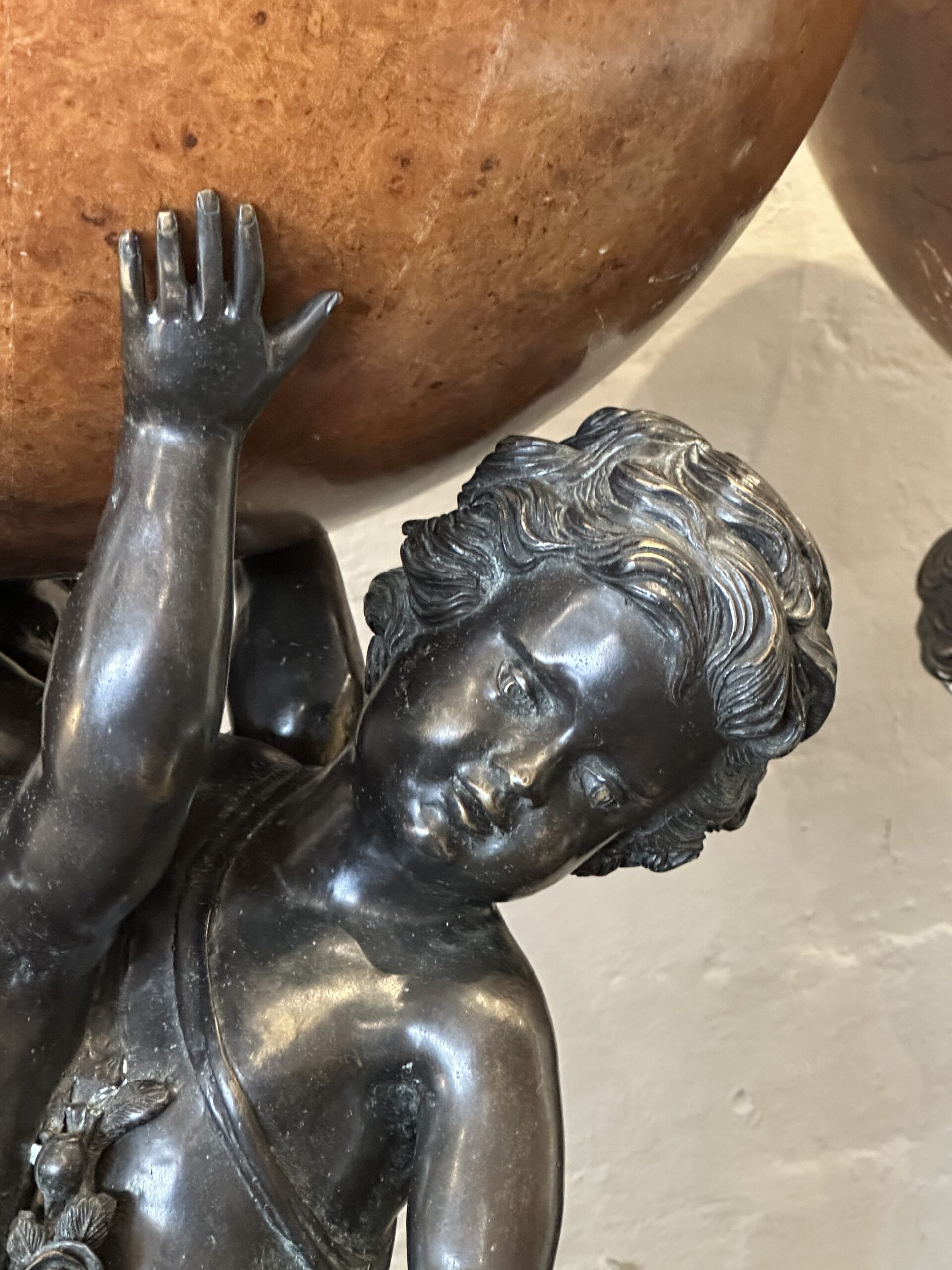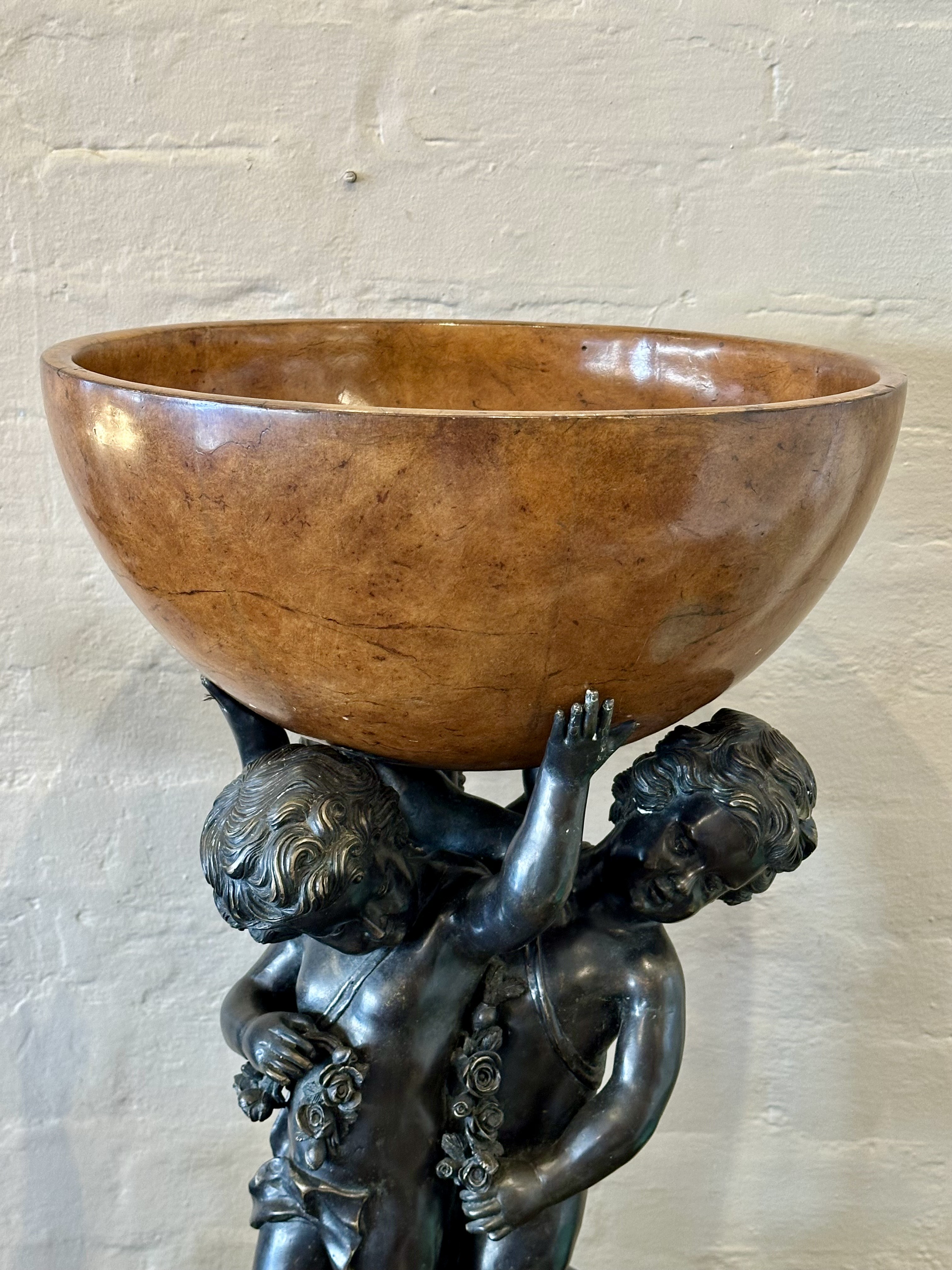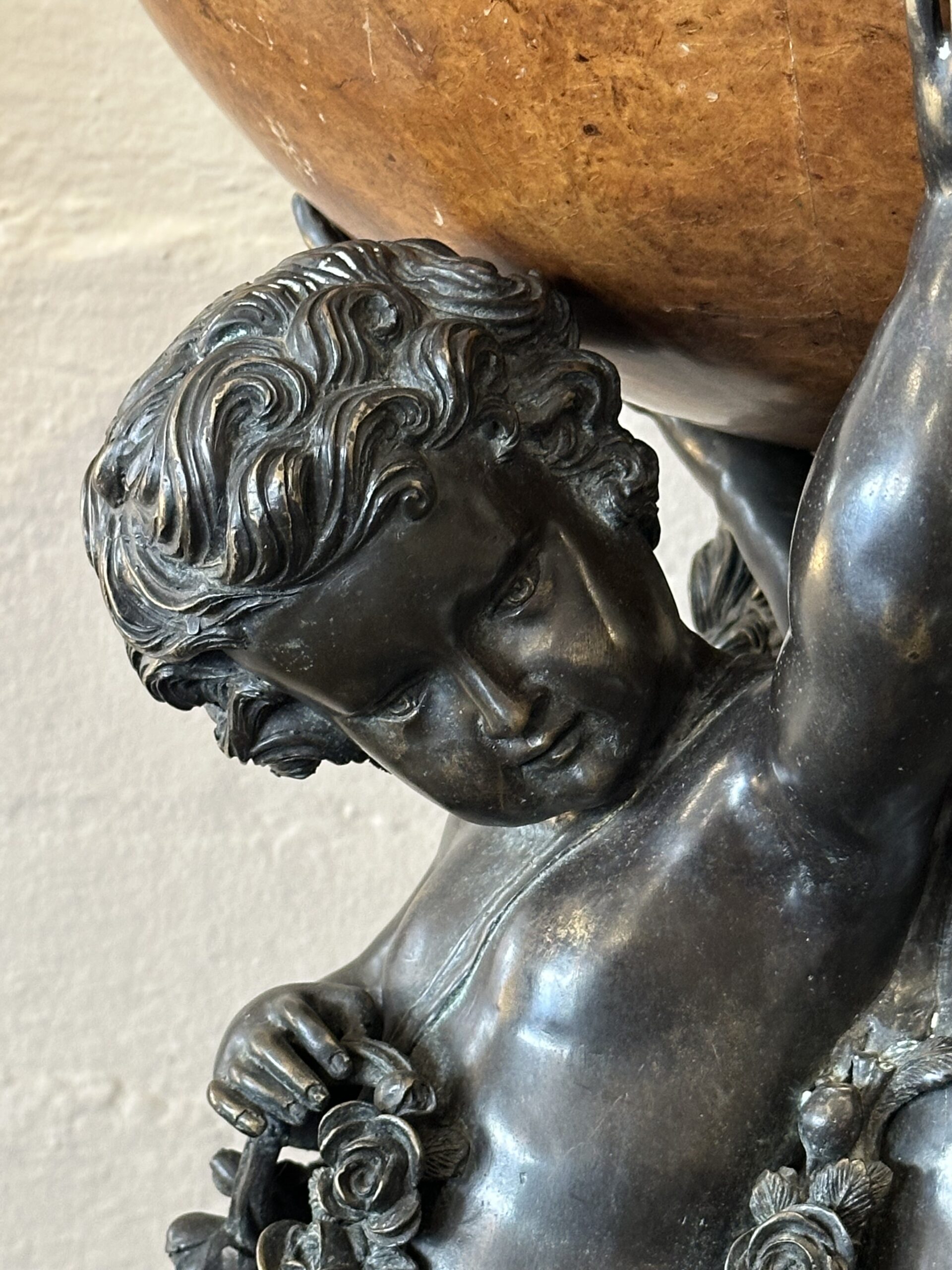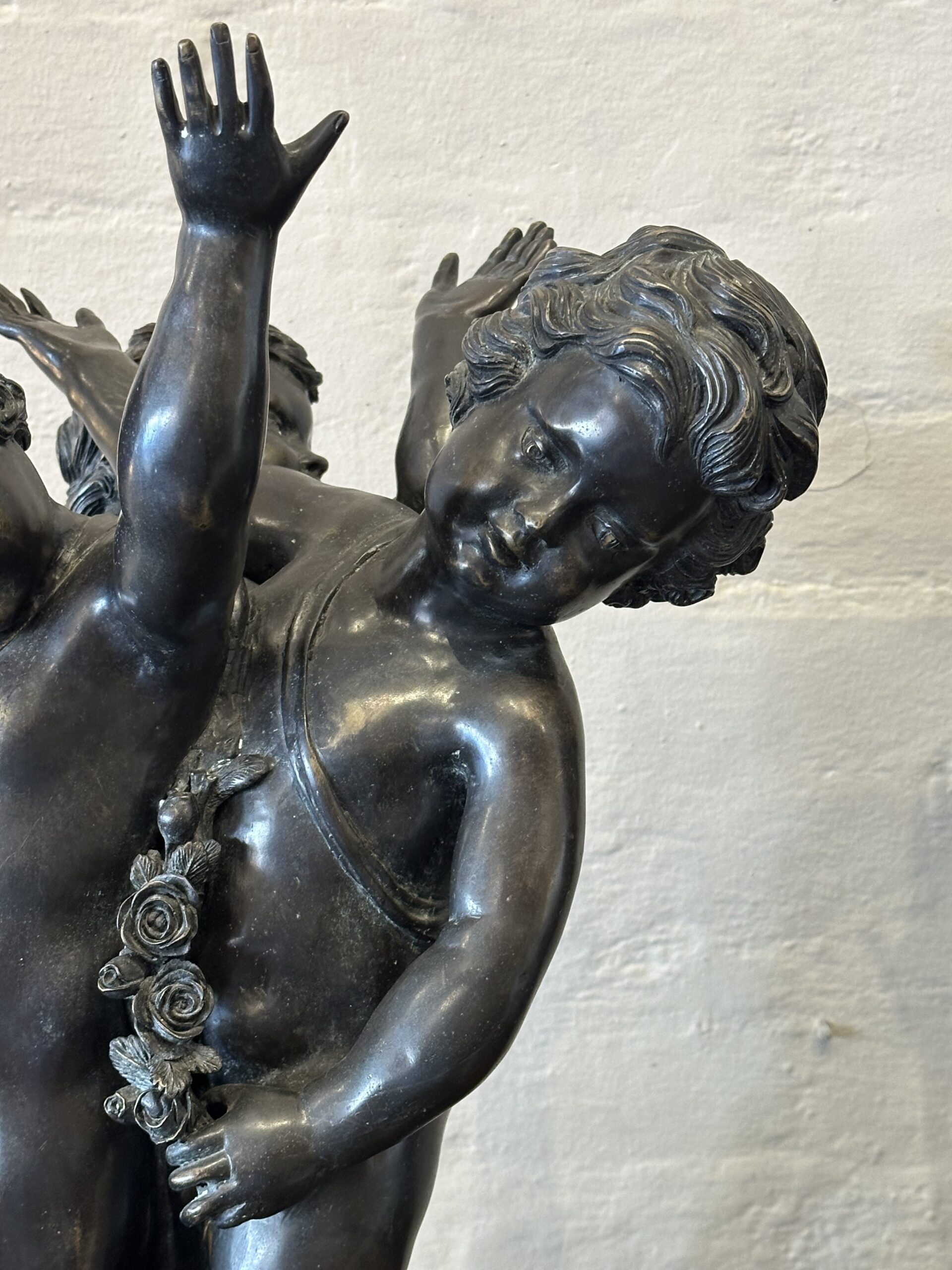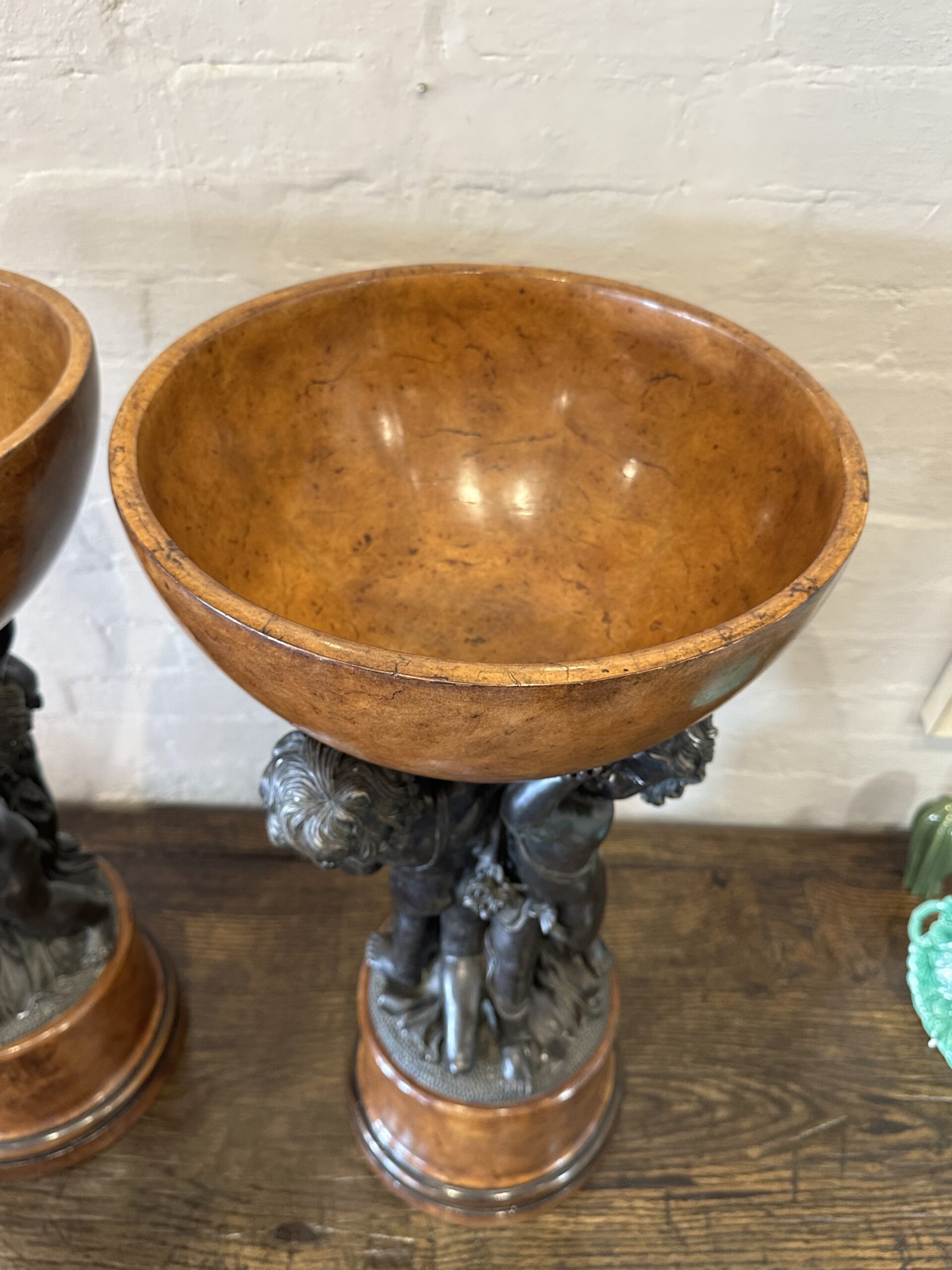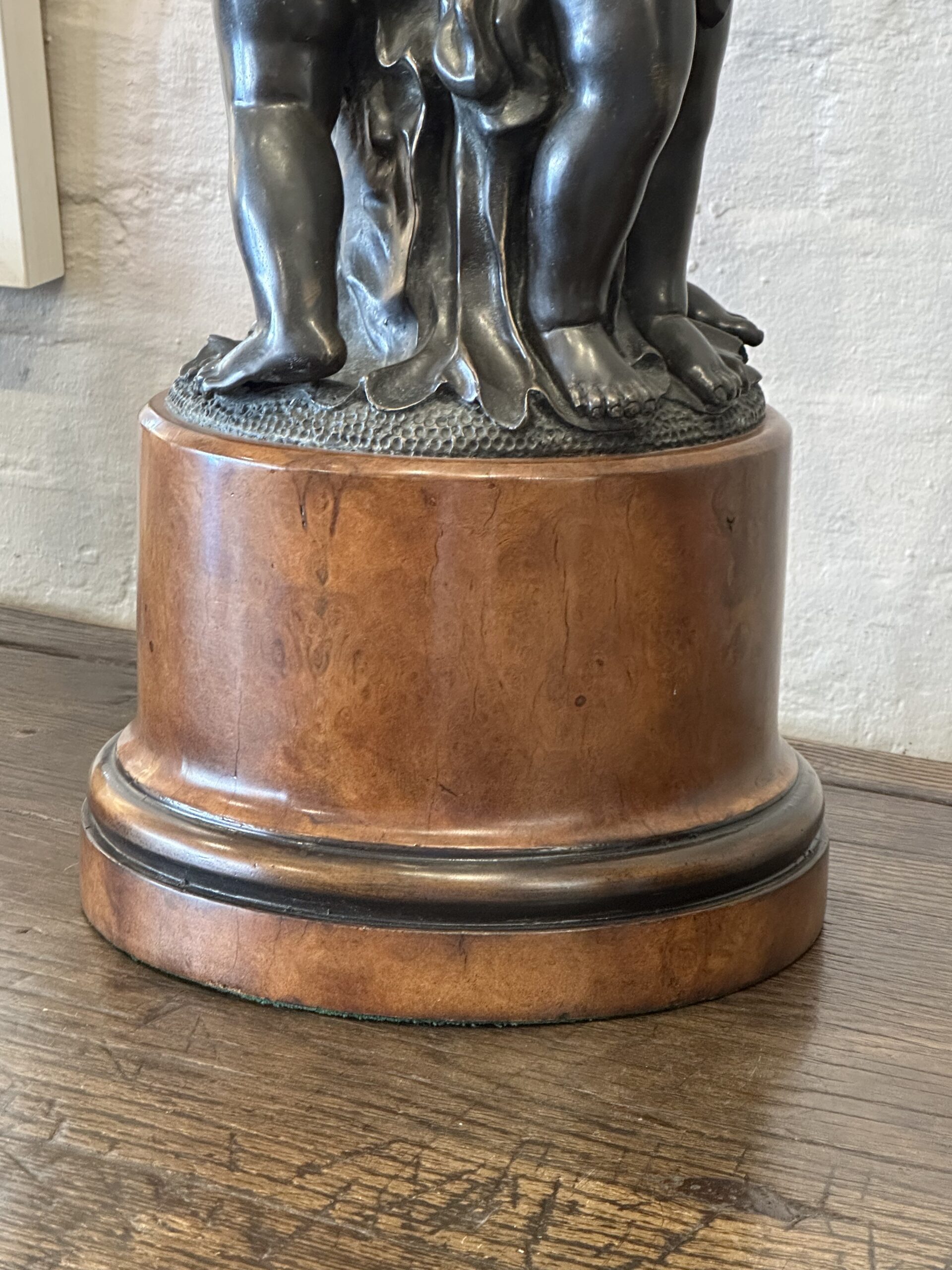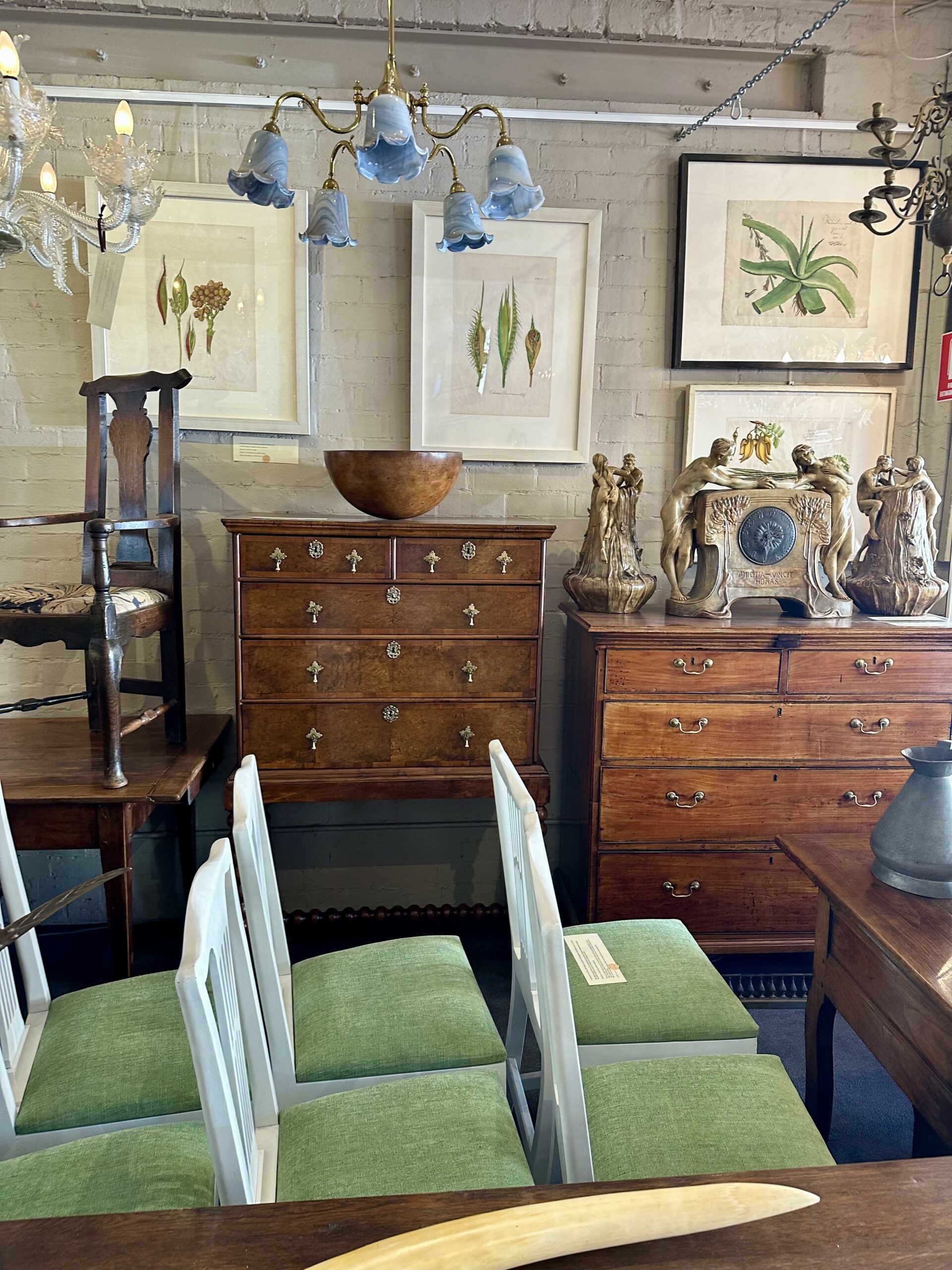Description
These versatile pieces can be displayed with or without the large burr elm bowls, depending on the desired aesthetic. Personally, I find they have a more sculptural presence on their own, allowing the richly figured elm urns to shine in separate arrangements. Even displaying one figure with the urn and one without creates a pleasing contrast—perfect for those who enjoy defying traditional presentation norms.
Because sometimes, breaking expectations creates the most memorable interiors.
History of the Putto / Putti
The putto (plural: putti) is a figure of a chubby male infant, often winged, that has appeared in art for over two millennia. Though frequently mistaken for cherubs, putti span a wider symbolic range—from sacred to secular, joyful to mischievous.
Originating in ancient Greek and Roman art, putti were symbolic of spirits or genii, often associated with Eros/Cupid (god of love), Dionysus (god of wine), or Pan (god of nature). In these early depictions, they embodied earthly desires, fertility, and abundance, often appearing in bacchanalian scenes or romantic contexts.
The Renaissance sparked a major revival of the putto, with artists such as Raphael, Botticelli, and Donatello incorporating them into both Christian and classical compositions. In sacred art, putti became angelic beings, often seen surrounding the Virgin Mary, the infant Jesus, or accompanying souls in funerary imagery.
In secular art, putti expressed the joys and passions of human life—sometimes sweet, sometimes cheeky. Their presence added lightness, whimsy, and emotional depth, acting as visual metaphors for love, innocence, and mischief.
Today, while the image of a winged putto may be most commonly associated with logos and romantic decoration, its history is deeply rooted in both mythological and religious traditions. The enduring appeal of these figures lies in their blend of playful charm and symbolic depth.

